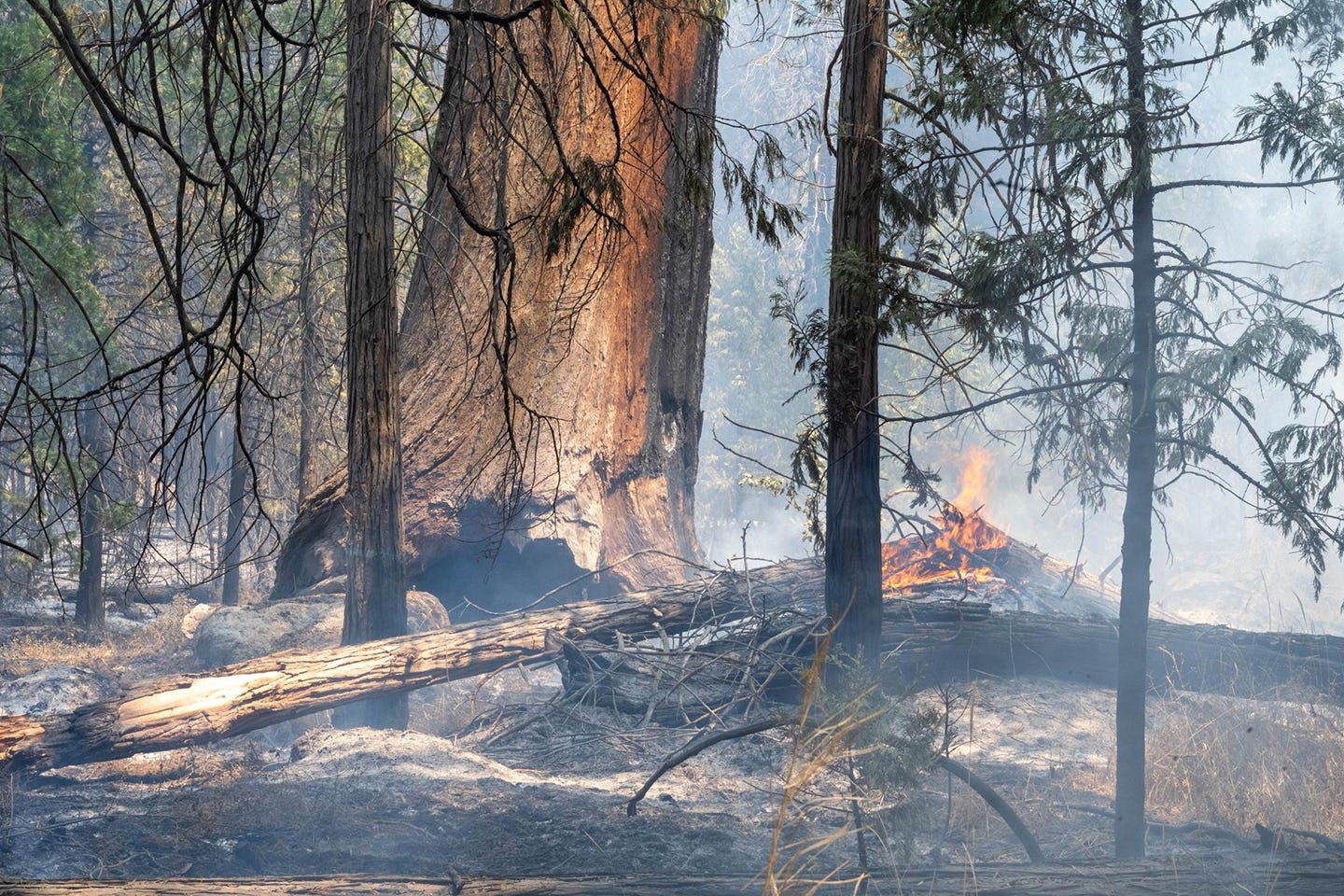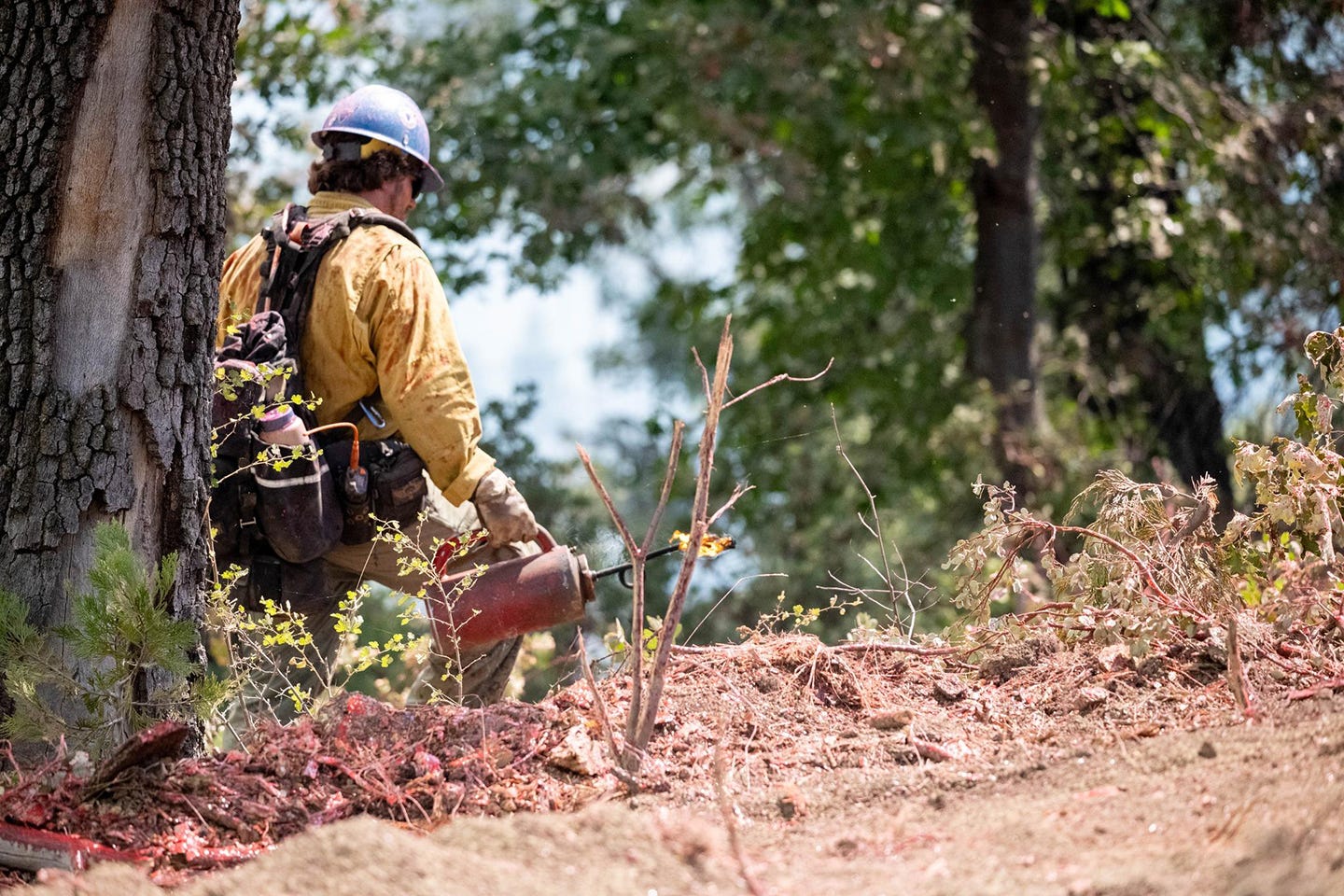Volume 3, Number 10 - Monday, Sept. 9, 2024
Published every Monday and Thursday

Perspective
SOMETIME TODAY, probably mid-morning, I expect an update about the Coffee Pot Fire, which has burned in the mountains southeast of Three Rivers, California, for more than a month. I’ll provide a link below to the fire’s Inciweb page, where a wealth of information will be published.
Due to other commitments, I’m writing this before that report. I’m also sharing what might be called an alternate view of the information previously provided by the National Park Service and professional firefighters working the fire.
In the Aug. 26 edition of this newsletter (HERE), I wrote about aerial firing in the Eden Creek giant sequoia grove during the Coffee Pot Fire. I also shared that the Facebook page associated with Sue Cag’s ilovetrees.net website published this post:
NPS has lit Eden Creek sequoia grove on fire. They threw fire from airplanes into the sequoia canopies. The Coffeepot fire was going out but they want to keep it burning. They surely intend to burn the entire wilderness and all sequoias on purpose. It’s all about money.
I asked Cag, via a Facebook message, for more information and specifically what she meant about “it’s all about money.” She has never responded to any inquiry or email I’ve sent.
However, in a post to ilovetrees.net on Aug. 29, Cag expanded on the subject. Here’s how she summarized her post:
The Coffee Pot Fire kept fizzling out, but the National Park Service (NPS) lit the Eden Creek Grove of sequoias on fire on purpose in order to do a lengthy control burn in the guise of wildfire. Eden Creek Grove is located in Wilderness and should not have been subject to this deceptive action.
When I read Cag’s Aug. 23 Facebook post claiming that the NPS was throwing “fire from airplanes into the sequoia canopies,” I asked the NPS to respond and (as reported HERE), Sintia C. Kawasaki-Yee, chief of communications and management support for Sequoia and Kings Canyon National Parks, told me that the agency didn’t believe the aerial firing ignited any tree crowns in the Eden Creek grove.
After I read Cag’s recent post, entitled “The Coffee Pot Fire Deception,” last Friday, I wrote back to Kawasaki-Yee and sent a link to Cag’s post, with this note:
Sue Cag has elaborated on her concerns about fire in the groves during Coffee Pot, alleging the fire went out and was restarted.
Is this true?
As of the time of this publication, I’ve had no response. But my question went to the NPS on Friday afternoon, and this is only Monday morning, so hopefully, a response is in the works.
You can read Sue Cag’s opinion piece, “The Coffee Pot Fire Deception,” HERE.
I encourage you to read Cag’s view because she’s obviously put a lot of effort into it and I think it’s important for everyone to know that there are divergent views related to giant sequoias. She even answered (indirectly) my question about why she thinks firefighting (or restarting) is related to money.
Here’s an excerpt:
According to the National Interagency Fire Center, in the low-fire year of 2023, for fire suppression only, the Forest Service received $2.7 billion and the Department of the Interior agencies received $466 million, totaling $3.1 billion. According to the Legislative Analyst’s Office, for the 2022-2023 fiscal year, CalFire received roughly $3.3 billion for “wildfire protection and suppression (also referred to as wildfire response or firefighting).” Every California taxpayer should be livid. [Update: so far, as of 9/6/24, the Coffee Pot Fire has cost us 37.1 million dollars.]
Note: That update and the cost estimate is from Cag. I haven’t been able to figure out where she got the number, and she doesn’t answer questions.
If you read her piece, you’ll see that she is also skeptical about whether the fire was really started by lightning and that she used a collection of apps and internet tools to follow the fire, which she believes went out on its own and was restarted by the NPS.
She writes: The NPS wants every sequoia grove to burn. It’s part of their plan.
Is Cag just touting a wild conspiracy theory?
Under the guise of fighting a wildfire, have public officials conspired to fill Central California with wildfire smoke, risk lives and property, injure firefighters, ruin people’s vacations and chance having the fire go crazy so they can spread millions of taxpayer dollars around and inappropriately use the opportunity to actively manage giant sequoia groves in a Wilderness Area?
Cag is not alone in her concerns about how the Coffee Pot Fire has been managed. I’ve heard from a knowledgeable reader and read comments from Three Rivers and Springville residents on Facebook that not everyone is sold on the management approach.
The NPS describes its wildland firefighting tactics HERE, noting:
Some fires may be aggressively suppressed, or put out, while others may be monitored and allowed to spread across the landscape because they do not pose a risk to human lives or structures and may have positive effects on natural areas.
The webpage has lots more information about how the NPS handles fires, including in Wilderness Areas, and it’s worth a read, but I’m not going to repeat it all here.
Clay Jordan, superintendent of Sequoia and Kings National Parks, at a community meeting in Three Rivers, drew a box on a whiteboard to illustrate how managers had decided to use indirect attack on the Coffee Pot Fire after determining they could not safely get to the fire to put it out while it was small. Jordan has also noted that the fire has been managed for full suppression.
He and others warned early on that the fire would grow. And I’m sure we all hope the plan — which later turned to direct attack with activities within the sequoia groves — works.
My expectation is that sometime — after the fire is out, when we can get information about exactly what happened in the groves and its impact — Cag’s allegations will be addressed in detail.
In a report at about 8:15 a.m. today, the fire was said to be 13,340 acres with 31% containment. A more detailed update will probably be published mid-morning. You can get the latest information on the Coffee Pot Fire HERE.
A timely podcast from NPR
NPR’s website yesterday carried a podcast entitled “Wilderness in the Age of Climate Change” with a timely focus on Sequoia National Park. You can find it HERE. It’s a 29-minute listen, and here’s the intro:
Wilderness is a designation of an area intended to be free from human intervention unless it's deemed absolutely necessary. But as climate change increases the frequency and severity of wildfires when does it become necessary for land stewards to intervene?
In Sequoia National Park this question of whether or not to intervene has land managers and environmentalists at odds with one another. Host Ayesha Rascoe talks with reporter Marissa Ortega-Welch about her new podcast series How Wild. In a segment from the first episode Marissa asks: with increasing wildfires threatening giant sequoias, known as some of the world's oldest trees, should we intervene or leave the wilderness to evolve on its own?
Worth a read
Charles Whisnand, editor of the Porterville Recorder, wrote on Friday about the Land Management Plan Direction for Old-Growth Forest Conditions Across the National Forest System and the Sept. 20 deadline for public comment on the draft environmental impact statement. The plan would amend all 128 forest management plans, including the plan for Sequoia National Forest, headquartered in Porterville.
As Whisnand reported:
“Tulare County supervisor Dennis Townsend has also been among those who have expressed his concern about the plan … which would potentially limit much-needed active forest management, adding the plan is unwise and should be rejected.”
You can read the rest of his article, which includes the opinions of others, HERE.
The public comment period for the national old-growth amendment draft environmental impact statement ends on Sept. 20. More information is online HERE. Comments can be submitted HERE.
Wildfire, water & weather update
Here is the weather report included with yesterday morning’s Coffee Pot Fire update on Inciweb:
A weak area of low pressure is moving into northern California, which will cause slightly cooler temperatures. However, the weather will stay dry. Winds will generally come from the southwest, but upslope and up-canyon winds are expected to start mid-morning.
You can see the Fire Weather map HERE. The best Sierra Nevada weather forecasts are at NWS Hanford, HERE, and NWS Sacramento, HERE.
Did you know you can comment here?
It’s easy to comment on items in this newsletter. Just scroll down, and you’ll find a comment box. You’re invited to join the conversation!
Thanks for reading & enjoy the long weekend!





As always, a good source of information. Frightening if Sue Cag's hypothesis is correct.